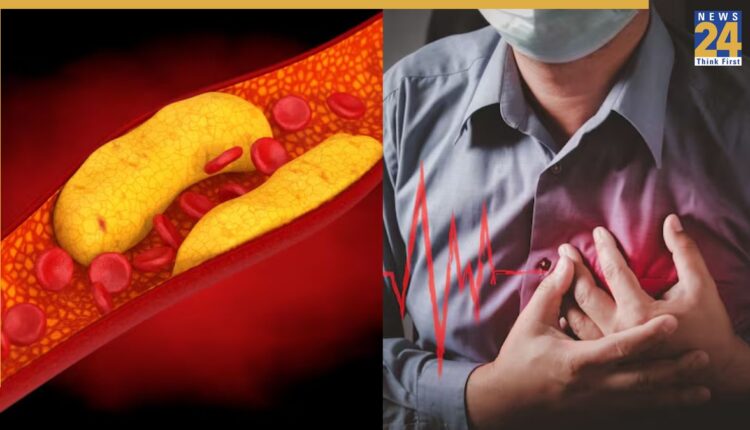High cholesterol, also known as hypercholesterolemia, is often called a silent killer because it usually shows no obvious symptoms. However, some people may experience warning signs, especially while walking or doing physical activities. These signs are often linked to Peripheral Artery Disease (PAD), a condition caused by cholesterol buildup that narrows blood vessels and limits blood flow.
Cholesterol is a fatty, wax-like substance made by your liver. It plays an important role in building cell membranes, producing vitamin D, and creating hormones. But because cholesterol doesn’t dissolve in water, it needs special carriers called lipoproteins to move through your bloodstream.
There are two main types of lipoproteins:
- Low-Density Lipoprotein (LDL): Often called “bad cholesterol”, LDL can stick to your artery walls, forming fatty deposits. Over time, this buildup can block blood flow and increase the risk of heart attacks and strokes.
- High-Density Lipoprotein (HDL): Known as “good cholesterol”, HDL helps clear excess LDL from your bloodstream by carrying it back to the liver, where it’s broken down and removed from the body.
What are the early symptoms of cholesterol?
High cholesterol often goes unnoticed, but your legs can reveal some early warning signs. When cholesterol builds up in your arteries, it restricts blood flow, which can cause discomfort and other health issues. Here are a few symptoms to watch out for:
1. Leg Pain or Discomfort
One of the first signs of high cholesterol is leg pain, often linked to Peripheral Artery Disease (PAD). When cholesterol clogs your arteries, less oxygen reaches your muscles. This can cause pain, tiredness, or cramps in your calves, thighs, or buttocks while walking or climbing stairs. The pain usually eases with rest but may persist in severe cases.
2. Muscle Weakness
Poor blood flow caused by plaque buildup can weaken your leg muscles. You might find it harder to walk, stand, or maintain balance for long periods. Over time, this can lead to muscle loss (atrophy), especially in older adults or people with other health conditions.
3. Cold Feet or Legs
If one of your legs or feet feels colder than the other, it may be due to blocked arteries. Reduced blood flow limits oxygen, making your skin feel cool to the touch. In more advanced cases, the skin might even look pale or bluish — a sign of serious circulation problems that needs medical attention.
4. Numbness or Tingling
Feeling numbness, tingling, or “pins and needles” in your feet or toes is another sign of poor circulation. Since nerves depend on oxygen, a lack of blood flow can lead to nerve damage. If you experience ongoing tingling or numbness, see a doctor to prevent infections or ulcers.
5. Changes in Skin Colour
Discolouration of your legs or feet — such as a pale, purplish, or blue tone — can happen when oxygen-rich blood doesn’t reach the skin properly. In extreme cases, this can lead to cyanosis, where tissues turn bluish due to severe oxygen deficiency.
Genetic signs of high cholesterol
Some genetic signs of high cholesterol include an increased risk of coronary artery disease (CAD), where plaque buildup narrows the arteries supplying blood to the heart. It can also lead to stroke, caused by restricted blood flow to the brain, and heart attacks, when arteries become blocked. Another condition, peripheral artery disease (PAD), occurs when plaque buildup reduces blood flow to areas like the legs, feet, and kidneys.
People at higher risk of developing high cholesterol often have a family history of the condition or follow a diet high in unhealthy fats. Lack of exercise, being overweight, diabetes, and thyroid problems can also contribute. Additionally, ageing, particularly in postmenopausal women, can naturally raise cholesterol levels.
This article is meant for general information only and should not be taken as medical advice. Always consult your doctor or a qualified healthcare professional for any concerns or questions about your health.

